Transcript
Children develop language and literacy skills in all sorts of settings, but perhaps one of the most overlooked settings is the church, the temple, the mosque – especially for communities who have recently settled in the UK.
Focusing on four groups who have come to London in the last 50 years – the Ghanaian Pentecostal community, the Polish Catholic community, the Bangladeshi Muslim community and the Tamil Hindu community – the three year long ESRC funded BeLIFS project (Becoming Literate in Faith Settings) of the Education Department at Goldsmiths, University of London found that the places of worship, services, classes and home lives of the children, centring around their faith, were important not just for literacy, but for the children’s multi-lingual identity.
In this podcast, anthropologist Dr Sarah Winkler Reid talks to Professor Eve Gregory, who headed up the project. [You can also see and hear Eve Gregory talk about the project in this video]
Here is the Transcript:
Becoming literate in faith settings: Language and literacy learning in the lives of new Londoners (BeLIFS)
Sarah Winkler Reid: Faith plays an important part in the lives of many children in Britain, but as Eve Gregory, Professor of Language and Culture in Education at Goldsmith’s University told me, very little research has focused on language and literacy learning in faith settings. Eve’s three year long project aimed to find out about the sorts of learning that happens as children take part in faith activities in places of worship, in faith classes or at home.
The project focused on four groups of ‘New Londoners’, communities of shared origins and faith who have come to live in London in the last fifty years. The Ghanaian Pentecostal community, Catholic Polish community, the Bangladeshi Muslim community and the Tamil Hindu community.
The project was a collaborative ethnography, Eve’s team of eleven conducted participant observation in the faith settings and the children and their families had video cameras so they could record their activities at home. Having recently completed the project Eve told me what had surprised her and her team most about their research findings.
Eve Gregory: Generally we were very surprised by the scope of learning going on in children lives, we were surprised that in many families, because we’re convinced that our families were not exceptional that actually faith permeates children’s everyday lives. Not only are many children involved in regular worship at the Temple or Mosque or the Church, but they are on a daily basis referring to their faith, using text, narratives, hymns, songs, art work from their faith. So we were surprised at the extent of learning and the way in which faith does interpenetrate lots and lots of different learning.
We were surprised that you couldn’t really separate language and literacy learning. Although the original intention of our project was to focus on language and literacy learning we realised you couldn’t separate them from cultural learning, from aesthetic learning, artistic learning, creative learning and moral learning as well. And all of the formed becoming part of a community, because that was the crucial thing, all of that gave children a framework, a sort of guide book for their lives actually.
[Audio of children singing as part of Children’s day at the Ghanaian Pentecostal Church].
SWR: Can you give some descriptions of the settings the children were learning in?
EG: Yes there were lots of different contexts; maybe I could just take a couple of contrasting ones. The Polish children were all very fluent Polish speakers.
[Audio of Polish children speaking in Polish in their Catholic faith class]
EG: Now we found out that was not necessarily because the children had come to the country more recently but indeed there is a history behind all of that. Indeed there is a history behind each of the groups. And the Polish children, as well as the Tamil children, their parents had generally come to Britain because their faith had been persecute
Now in the Polish case of course it was in Communist times that people were not able to practice Catholicism. So Catholicism was a symbol if you like of the culture and the history of their country, and so it was very important that the language of Polish was kept up within the Catholic faith, and the Catholic faith could not actually be separated from the history and culture of Poland.
And the Tamil community similarly, because they were Tamil Hindus, obviously they had been persecuted in Sri Lanka and a number of them had come across as refugees, so they were also very fluent speakers.
Now the Polish children, in their classes, had very formal lessons, and those lessons often connected faith with Polish history, and they were all conducted in Polish. The teachers were highly qualified, with degrees often in religion and in another subject, Polish or English. And they would only use English if the children really didn’t understand the Polish. Most of the children were born in England, but they were still fluent Polish speakers.
One of the lessons that really sticks in my mind was a lesson about saints, because it was the first of November coming up, where everyone goes to the cemetery, All Saints day and they honour the dead. And the teacher was talking about saints, and she referred to halos, and they were using words to describe halos, what a halo was and that it was the light around a saint’s head, indeed they were looking at paintings of saints and looking at the halos above her head. And then she said, “Well we need to think about this in terms of Polish history, Poland was occupied for 123 years, and those were the times of darkness. Now it’s the time of light. So just like the halos around the saint’s heads, we’re looking at the light coming into Poland”. So that was a very formal lesson, if you contrast that with one of the Pentecostal lessons.
[Audio: Children singing in English and Twi in a Ghanaian Pentecostal lesson.]
There were enormous numbers of children, of different ages but clustered into different areas of the room. Now the Ghanaian children didn’t keep up the Twi language anywhere near as much as the Polish children did the Polish language. But the teachers wanted the children to learn Twi, so part of the service was in Twi and she would teach the children simple rhymes in Twi and so the children would learn through a call and response approach, whereby the teacher would call, the children would respond and that is a very familiar way of learning in Ghana, and she would do that it Twi, so the children would learn Twi in that way. So that’s just two different types of learning taking place.
The researchers who were working on the project actually went in and taped from the formal classes, whereas the families did the recordings at home and some of these were very intimate settings.
We have a very lovely video recording of Louisa, a child who was saying her bedtime prayers and she had learnt so many different prayers, which she said on a regular basis, so her mother is actually filming her kneeling beside the bed saying these prayers, so it’s a very intimate moment, which of course no research would be able to go in and actually film that sort of thing.
We also had a video from the Muslim setting whereby one very young child, a four year old is sitting in bed with a four month old baby beside her and she’s reading a story…
[Audio: Isha reading a bedtime story to her baby brother]
The story is in English, but from time to time she uses words from her Arabic class, when she’s not quite certain of the English words and she’s teaching her four month old baby brother, and that was recorded by an older sibling.
SWR: I also asked Eve to give me some examples of how children include their faith in their play.
EG: One example is two Tamil Hindu children, and older boy and his younger sister creating through Lego blocks a temple together. And admittedly it’s the boy, but partly because he’s older, who is doing most of the construction, but his sister is also doing it with him, and they are constructing the symmetrical form of the temple – they start of by doing one temple and then they decide to demolish that one and create another one, and they are very carefully looking at the different parts of the temple, the entrance, the shape of it, etc. etc. And then, once they have created something that they think is worthy of being their play temple, they take it out in the garden, they re-enact part of the service in the temple, and particularly they re-enact what the priest does with the candles, which is going in a clockwise direction in a circle, going around and around to show a worship of a deity so they re-enact what’s going on there, so that’s one example.
Another example, in fact it is another child of Hindu origin, who syncretises Cinderella as part of a story and some of the deities, and she then goes on to tell the story of what happens when the temple closes at night.
Tanya telling the story of Krishna coming to life in the Temple at night
Now of course in her mind, and probably in the mind of many other young children, all those deities come to life and they have a wonderful adventure of doing all sorts of things together in the temple at night and then of course when day time comes they all have to go back to their pedestals and be the deities again. So we have lots of examples of children playing out what’s going on in their faith settings.
[Audio: Imran presents his work on Faith to his family during Hijz celebration event]
SWR: So what sort of implications does this research have for more general understandings of literacy and learning.
EG: I think it shows a number of things. It shows that literacy learning is much wider than simply learning phonics or the names of letters. It shows that children can learn narratives within a meaningful context. It shows that even very young children are able to memorise very complex texts. It shows that children are able to become multi-lingual and learn different scripts at a very young age. It shows that children can translate between those different scripts, we have a video of a nine year old Hindu child saying her prayers, first in Sanskrit, which is the language of the religion, then in Tamil, which is her parents language and then in English. We have examples of the Muslim children who are able to read classical arabic, really quite fluently and with a beautiful intonation, as well as learning to interpret those prayers in English. So these are highly complex literacy skills that children are engaged in from a very young age.
Part of it is that those families, teachers and faith leaders always expect those children to succeed, it might take a child a little longer, but no one thinks about literacy in terms of failure actually. Because how can you fail to become a member of your faith? You don’t, if you want to do it, you can do it. So it’s literacy in a very meaningful context I think.
[Audio: Nuha’s family meeting]
SWR: So how does that relate to the sorts of learning children are doing at school, what’s the relationship between those two things?
EG: Well that’s a very interesting and important point. One of the things I’d like to do now, and I’m trying to compose a proposal, in order to actually exchange knowledge with children’s teachers. At the moment, teachers have very little idea about all this learning taking place regularly, in many of the children’s lives who they teach. It’s not their fault, how would they possibly know, if they themselves attend a church, they might have knowledge about that one particular church, but they cannot possibly know about all the other settings. So what I’d like to do is try and get teachers to see the scope of some of this learning and to discuss for themselves how that might be used.
I would like faith leaders and faith teachers to realise that they are important, not just in teaching children about faith, but that they are literacy teachers as well.
Policy implications I would hope, that quite simply, faith would be recognised as a learning setting. And as far as children are concerned, it not only teaches children morals but it also teaches them cultural knowledge, linguistic knowledge, social knowledge – how to behave in an intergenerational settings – because there aren’t many settings that are completely intergenerational, are there? Where younger children are coming together with much older people and expected to behave appropriately. As well as l linguistic, and literacy, mathematical in some respects because they learn about one to one correspondence, directionality, symmetry etc.
SWR: So it all sounds very positive, was there anything you were critical of?
EG: Well the whole topic, you could say people could be very critical of, because faiths have a content. And so sometimes people would question should children be learning about some of the content that is within the faith itself. Now as researchers, we’ve made it very clear that we are not there to judge if Islam is on a different level, or perhaps more appropriate and correct than Christianity or of Hinduism. That is not what we were actually looking at, we were taking what is called in ethnography an emic perspective, in which you take the perspective of the participants. So I can’t really judge the content of the religion, and I think it would be unfair of me to try and do so.
As far as other negative things are concerned, some people might say, “well these children need more time to run around and play, they’re spending a lot of time in their faith settings”. I can’t say we witnessed any lack of that at all on the children’s behalf, because these were very busy children actually, and they weren’t just attending their faith classes.
Children singing as part of Children’s day at the Ghanaian Pentecostal church.
SWR: So what for you, personally, was the most valuable or the thing you’ve taken with you from this project?
EG: I think, right at the beginning of the project, the way we went about it was we all brainstormed on our own faith backgrounds, and we all had different things to say, but we carried those things with us and we questioned all our interpretations at the beginning. The research who worked in the Hindu setting said for her, as a young child, she went in to the faith setting and it was awe and wonder that inspired her. And I think it’s that sort of awe and wonder that I’ve taken with me, because it’s the energy of some of those people who are working in those settings, who are attending, who are putting on dance classes, or Scouts or Cubs or other activities. They do something they really believe in, and the community supports them and it’s very optimistic, and it’s something to be admired, that people do things, whatever they happen to be, that they really believe in, I think that’s what I have taken with me.
Becoming literate in faith settings, Language and literacy learning in the lives of new Londoners (BeLIFS) was a research project conducted by the Education Department at Goldsmiths, University of London and funded by the ESRC.

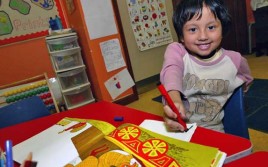
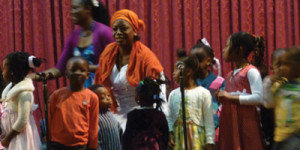
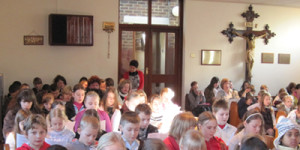
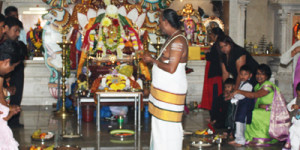
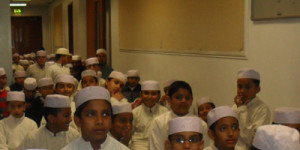
Subscribe with…